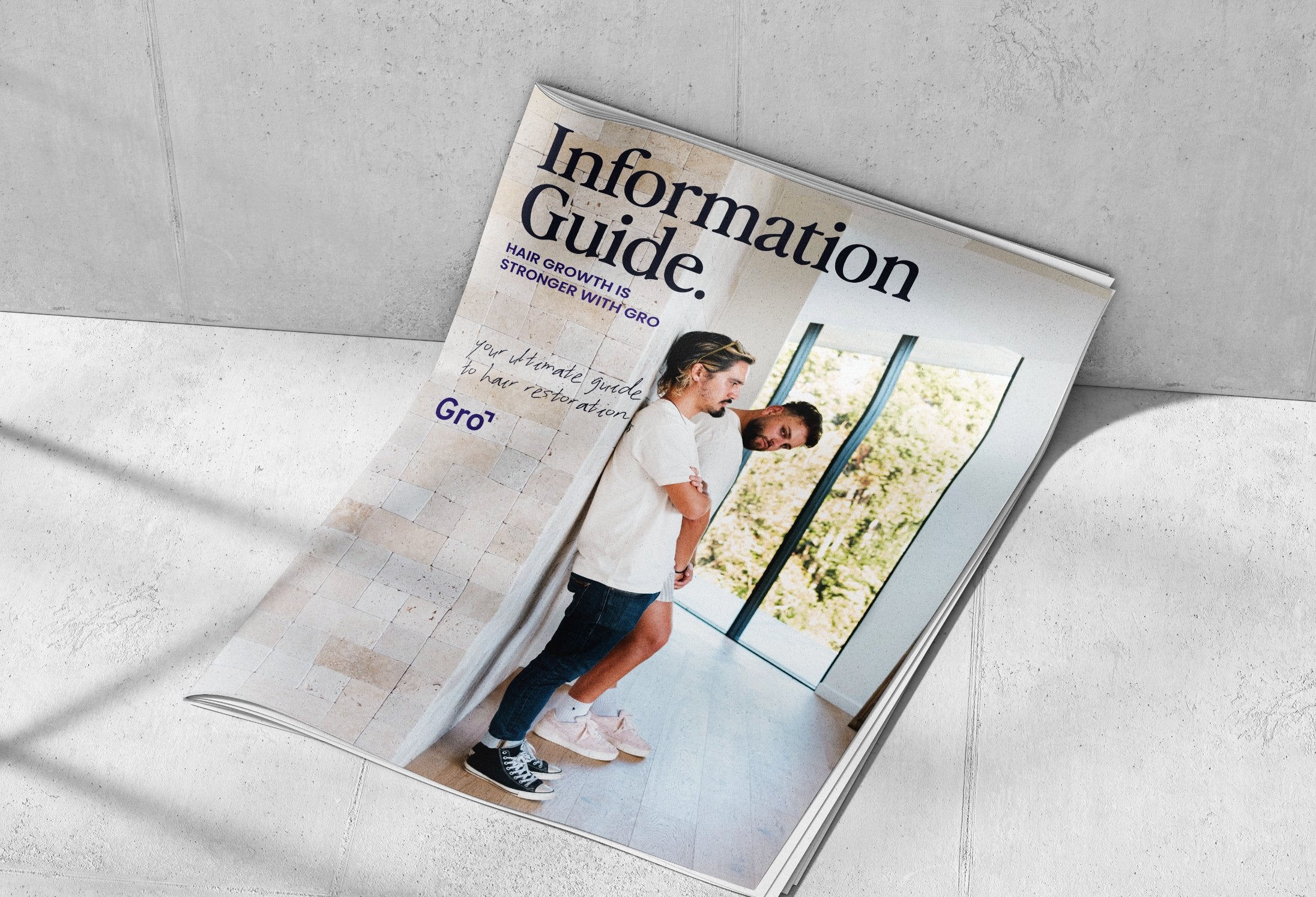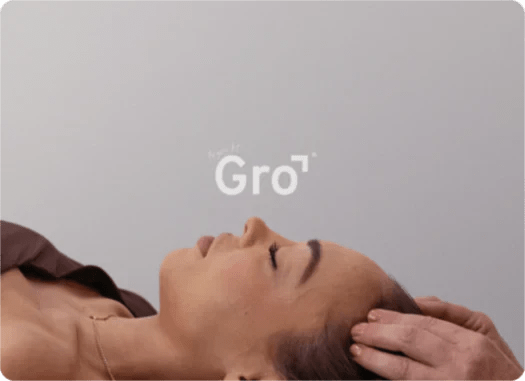Minoxidil vs Finasteride: Which is Best for Hair Loss Treatment?
Hair loss affects millions of Australians, with causes ranging from genetics to hormonal changes. Fortunately, treatments like Minoxidil and Finasteride can help slow or reverse hair thinning—but which one is right for you?
Discover more below on how these medications measure up against each other in their treatment of hair loss.
What is the Difference Between Minoxidil and Finasteride?
When it comes to prescriptive hair care medication, both Minoxidil and Finasteride are popular choices in Australia.
If a health professional chooses to prescribe you a medication to aid in hair loss, it will likely be either of the two. However, these prescription medications differ in use, side effects and other metrics. Knowing their similarities and differences can help you understand your hair growth treatment plan more effectively.
Similarities
When it comes to similarities in the debate between Finasteride vs Minoxidil, the most notable ones are:
- Both medications can come in oral and topical forms, although Minoxidil may sometimes come as a spray or applicable foam.
- Users must be over the age of 18 years in order to use either medication.
- The main condition both medications are prescribed for in the hair loss industry is gender-based pattern baldness or hair loss.
Differences
In turn, Finasteride and Minoxidil have some key differences to note. Knowing about the following can help you understand why each option may be prescribed for your particular hair loss or thinning needs:
- Finasteride works by lowering DHT levels, a hormone more formally known as dihydrotestosterone, in the scalp.
- Minoxidil focuses on improving blood circulation in the scalp. It widens blood vessels in the scalp to better deliver nutrients and oxygen to hair follicles.
- Generally, Finasteride focuses on slowing hair loss rather than encouraging growth.
- Minoxidil usually encourages hair regrowth by thickening existing hair shafts and promoting new growth.
- Male pattern hair loss is the only condition that is treated effectively by Finasteride. It cannot be used by women in treating female pattern hair loss.
- Several hair loss conditions can be treated with Minoxidil, including both male and female pattern baldness.
Choosing between Finasteride and Minoxidil depends on your specific type of hair loss. A healthcare provider can determine the most suitable option based on your condition. If you are experiencing male pattern hair loss, female pattern baldness, receding hair lines or even thinning hair follicles, it is best to talk to a professional as soon as possible to get started.
Minoxidil: Pros & Cons
✅ Available for both men and women
✅ Can promote new hair growth
✅ Available in topical and oral forms
❌ Requires long-term use to maintain results
❌ It may cause scalp irritation or unwanted hair growth on the face/body
Finasteride: Pros & Cons
✅ Can slow or stop hair loss progression
✅ Taken as a once-daily pill (convenient)
✅ More effective for male pattern baldness
❌ Only for men; not approved for female hair loss
❌ Possible sexual side effects in a small percentage of users
Why Choose Minoxidil for Hair Loss Treatments?
In the debate of Minoxidil vs Finasteride, many are prescribed the former as a key aspect of their hair growth journey. Not only does the medication often come in a range of product styles for users' comfort, but it can also be used by men and women alike.
Whether it is oral or topical Minoxidil, this medication tends to be more frequently prescribed to Australians simply because there is no gendered restriction on its use. Anyone dealing with androgenetic alopecia and other hair loss conditions may have the potential to be prescribed this resource.
What is Minoxidil?
Minoxidil is a type of hair loss medication that works by stimulating blood circulation in the scalp. It does so by widening the blood vessels. With a stronger blood flow, the scalp and hair follicles can receive more oxygen and essential nutrients.
Over time, these nutrients and oxygen may begin stimulating hair growth and improving the health of damaged hair follicles. This may lead to thicker and healthier-looking hair.
Side Effects of Minoxidil
When taking Minoxidil, it is important for users to be aware of potential side effects that may arise. Although long-term use is generally safe for most users who are prescribed the medication by a professional, there may be some short-term side effects like:
- Reversible hair growth in areas outside of the scalp
- Temporary hair shedding
- Scalp irritation or redness
- Changes to your usual hair texture or colour
While not as common, there are cases where Minoxidil causes more severe side effects. This can include:
- Dizziness or fainting
- Heart palpitations or a sense of tightness in the chest
- Extra hair growth on the face and body
- Weight gain
- Swelling of extremities
- Fatigue
If you are experiencing any worrying or long-term side effects from Minoxidil, talk to your health care provider immediately. They can help you find an alternate path of treating hair loss while also addressing your concerns.
Why Choose Finasteride for Hair Loss Treatments?
Both Finasteride and Minoxidil have unique benefits for treating hair loss, but the former tends to be used for more specific conditions. That is, in treating male pattern baldness and hair loss.
Women are generally not prescribed topical nor oral Finasteride unless in extenuating circumstances. This is because Finasteride works by targeting hormones that are generally produced in men. Its accuracy and safe use are not as guaranteed in women due to this.
What is Finasteride?
Much like Minoxidil, Finasteride is a hair loss medication that can come in oral or topical form. When taken, the medication works by targeting the hormone responsible for male pattern baldness.
Abundance of the hormone dihydrotestosterone (DHT) is one of the main causes of male pattern baldness. It attaches itself to hair follicles and damages them enough that it is difficult for them to grow new hair.
Finasteride's efforts to block this hormone at a professionally prescribed dosage can help to prevent further hair loss in men. With the lack of damage to hair follicles, renewed growth may begin again.
Side Effects of Finasteride
Between Finasteride and Minoxidil, the former tends to have more notable side effects. This may include:
- Skin rashes
- Breast enlargement
- Depression and anxiety
- Diarrhea
- Dizziness
- Sexual dysfunction, including erectile dysfunction or impotence
Some side effects may resolve after stopping the medication, but experiences vary. It is best to speak with a doctor if you have concerns.
Can You Take Minoxidil and Finasteride Together?
In short, it is possible to take Minoxidil and Finasteride together.
Since Minoxidil and Finasteride target hair loss through different mechanisms—vascular stimulation and hormone suppression—they can be safely used together for a combined effect.
However, taking Finasteride and Minoxidil together is only approved for hair loss when prescribed by a healthcare professional. Always take the recommended dosage and talk to your doctor if you experience any side effects.
Which to Choose for Hair Loss Treatment: Minoxidil or Finasteride?
There are a lot of differences and unique benefits when we compare Finasteride with Minoxidil in treating hair loss.
Each medication essentially works to target different conditions in the body that may lead to hair loss. Hence, the option to be 'chosen' between them relies on what condition is causing your hair loss, your lifestyle, the effects the medication has, your gender, and many more factors.
Ultimately, the recommendations given by a healthcare or hair care professional is the most reliable method of 'choosing' between Finasteride and Minoxidil. They will work with you to find the optimal path to treating hair loss, which may also include more permanent options like a hair transplant.
Consult a healthcare professional to determine the best treatment approach for your hair loss. Our team will work alongside you to create a tailored treatment plan, which can include helping to determine what kind of prescriptive haircare suits your needs.
Book a free consultation to learn more about how we can create an effective treatment for your hair thinning or loss.
FAQs
What Has Worse Side Effects, Minoxidil or Finasteride?
Unlike Finasteride, Minoxidil's side effects tend to be mostly short-lived and rarely severe in impact. However, any prolonged side effects should be discussed with a healthcare professional as needed.
In contrast, Finasteride's more severe side effects tend to be fairly long-term and impactful. For example, clinical studies estimate that 1-2% of Finasteride users may experience sexual dysfunction, which can persist in rare cases after stopping the medication
Do I Need Minoxidil if I Take Finasteride?
You do not need to take Minoxidil if you are already taking Finasteride. However, some healthcare or hair care professionals may recommend to take both for treatment.
Does Finasteride Affect Testosterone?
Finasteride has actually been clinically proven to initially and temporarily raise testosterone in users. This is not applicable to all users, however, and many may not notice any impact on their testosterone levels.
Who Should Not Use Minoxidil?
Minoxidil should not be used by those who are: lactating, pregnant, or known to have sensitivity to the medication and/or its ingredients.
If you have any pre-existing health conditions, such as diseases of the scalp or heart issues, it is crucial to discuss this with a doctor before taking Minoxidil.
Are Finasteride Side Effects Permanent?
For many users, Finasteride's side effects are not permanent. Yet, there are still cases of effects continuing even after stopping treatment.
A notable example of potentially long-lasting side effects includes sexual dysfunction. If you are aware of any systemic side effects while taking Finasteride or after stopping, it is best to talk to a healthcare professional immediately.
Do You Have to Use Minoxidil Forever?
Minoxidil often takes a few months of use to show results. In much the same way, a few months after stopping the medication, hair loss may continue once more.
It is advised to take Minoxidil as directed by a health professional and as long as desired to prevent hair loss.












